Overview
So… you’re torn between two legends. On one side: a proven tank that’s been dragging people out of backcountry messes for 20 years. On the other: the shiny new kid with lockers, cameras, and all the swagger Ford could cram into a single body-on-frame. You’ve seen the arguments. You’ve read the comments. But you still want a straight answer — which one will actually work best for you out there?
Here’s what we’re gonna do. We’ll break down strengths, failures, and upgrade strategies for both rigs — based on what actually happens out on the trail. We’ll talk Toyota 4runner skid plates, Ford parts accessories, busted tie rods, smart lift setups, and everything else the forums love to fight about. If you’re building either truck to wheel it hard, this guide’ll show you where to start — and what you’ll regret skipping.
Table of Contents
- Two Off-Road Icons, One Big Question
- Both Built for Trails – But Designed for Different Drivers
- Strengths & Weak Points – What Breaks First
- What Both Platforms Need Before Serious Trail Abuse
- Aftermarket & Mod Culture – What You Can (and Can’t) Build

Two Off-Road Icons, One Big Question
The Legacy of Toyota 4Runner and Its Aftermarket Parts Toyota 4Runner Community
The Toyota 4Runner didn’t just earn its off-road stripes — it built a legacy. From the 4th to 5th gen models, this rig has proven itself where it counts: deep in the backcountry, on trails that chew up lesser vehicles. Simplicity, reliability, and trail geometry made it a favorite among those who actually get dirty. And when properly equipped with Toyota 4runner skid plates, long-travel suspension, and the right Toyota 4x4 parts, it transforms from family hauler to backwoods beast.
What really sets it apart is the community. Every forum thread, every garage build, every trail-tested setup adds to a massive knowledge base. Whether you’re upgrading Toyota 4runner trd skid plate bolts or fine-tuning your Toyota 4runner off road accessories, someone’s already been there — and they’ve posted about it. That shared experience is why Toyota 4runner parts accessories are more than just gear — they’re a blueprint for long-term builds that actually last.
The Return of the Bronco and Rise of Ford Bronco Parts and Accessories Culture
The Bronco came back swinging — and it had to. After 20 years away, Ford dropped a fully trail-ready rig with lockers, modular panels, and a whole new era of Ford Broncho parts and accessories. But for all the hype, early models came with weak spots: busted tie rods, water-prone electronics, and steering issues that made the rounds fast on the forums. Still, the community did what real off-roaders do — broke it, fixed it, and made it better.
Now, that early chaos has turned into a full-blown culture. Builders are pushing limits, swapping in upgraded aftermarket ford parts, and tuning the platform into something serious. The rise of Ford parts accessories and custom Ford accessories Broncho kits means you’re no longer stuck with stock — you can build smarter, stronger, and tougher. And with the right gear from the Ford parts catalog, the Bronco has finally grown into the off-road machine it was always meant to be.
Both Built for Trails – But Designed for Different Drivers
You won’t go wrong taking either of these rigs off the pavement — but they’re not built for the same kind of driver.
Let’s start with clearance and articulation. Stock for stock, the Bronco offers up to 11.6 inches of ground clearance on Sasquatch-equipped trims, compared to the 9.6–9.8 inches of the 4Runner TRD Pro. That’s a measurable edge on rocky or rutted terrain, especially when you factor in Ford’s better approach (43.2°), breakover (29.0°), and departure (37.0°) angles — far steeper than the 4Runner’s 33°, 21°, and 26° respectively.
But clearance isn’t everything. Suspension design matters just as much — and here’s where it gets interesting. The 4Runner uses a traditional solid rear axle with a four-link setup and coil springs. Simple. Proven. Durable. The Bronco opts for independent front suspension and a five-link rear coil setup — giving it more compliance and control at high speed (think desert washboards), but potentially more wear points over time.
Lockers? Crawl control? Tech? The Bronco comes out swinging. Front and rear electronic lockers, sway bar disconnect, Trail Turn Assist, one-pedal crawl mode — all available from the factory. The 4Runner offers a rear locker and Crawl Control on TRD trims, but it’s simpler and a bit less surgical when it comes to finesse in slow, rocky sections.
Then there’s power and gearing. The Bronco’s turbocharged 2.3L (300 hp) and optional 2.7L V6 (330 hp) offer more torque and responsiveness than the 4Runner’s aging 4.0L V6 (270 hp). But the 4Runner runs a bulletproof 5-speed automatic — less refined, but known to last. The Bronco’s 10-speed auto shifts faster and keeps RPMs optimal, but has already logged a few durability concerns in high-mileage, dusty use cases.
Payload and towing are close: the 4Runner tows up to 5,000 lbs, while the Bronco matches that with its four-door trims. Payload goes to the Bronco, topping 1,370 lbs versus the 4Runner’s ~1,200 lbs depending on trim.
And then we get to reliability and long-term ownership — arguably the biggest separator. The 4Runner is an outlier in modern automotive reliability. With multiple examples clearing 300,000+ miles on original drivetrains, it’s hard to beat. The Bronco? Still new. Promising, but still under scrutiny. Early issues with electronics, soft top seals, and steering racks make it harder to forecast long-term costs.
Cost-wise, a TRD Off-Road 4Runner starts around $44K, while a comparably equipped Badlands Bronco can hit $53K+ — though you’ll get more tech and capability out of the gate. But you’ll also get more to maintain.
In short: The Bronco is a scalpel. The 4Runner is a hammer. One’s designed to do everything out of the box. The other’s designed to survive anything — even after the tech stops working.
Which One’s Better for Daily + Weekend Use?
Okay, let’s ditch the numbers and get real: which of these two rigs actually fits your life?
If you’re the kind of driver who wants high-tech features, a comfy ride, and already-planned adventures on moderate trails, the Bronco feels amazing. It turns tighter. It rides smoother. And it comes with all the gadgets that’ll make your buddies jealous. You’ll be able to wheel hard right away — no mods required.
But if your plan is to keep a rig for 10+ years, drive it cross-country, wrench on it yourself, and trust it to start every time even after a brutal winter or three months in the garage — the 4Runner is still king. It’s simpler, easier to maintain, and way more forgiving when something breaks in the middle of nowhere.
Driving it every day? The Bronco’s more refined inside. Driving it forever? The 4Runner has already proven it can go the distance.
So the question isn’t “Which one’s more capable?”
It’s: “Do you want a rig that’s already perfect — or one that’ll never quit, even after it’s been through hell?”
If you’re also tossing around the idea of going Jeep, we’ve got a full no-fluff breakdown right here: Jeep vs Toyota — what really works on the trail.
Strengths & Weak Points – What Breaks First
When it comes to raw trail capability, both platforms were built to take a beating — but their strengths lie in different styles of terrain. The solid rear axle and independent front suspension on both the Toyota 4Runner and Bronco give them decent balance for mixed off-road use, but the Bronco’s front suspension offers slightly more articulation thanks to its longer-travel setup and coil-over shocks, especially in the Sasquatch or Badlands trims. Where the 4Runner shines is reliability and predictability — especially when fitted with Toyota 4runner off road accessories like upgraded shocks and sway bar disconnects. While it may not match the Bronco’s breakover clearance or articulation stock-for-stock, it holds a reputation for composure in rugged terrain, and the Toyota parts 4runner community often upgrades quickly to bridge the gap.
The weak points? On the Bronco, it’s steering — specifically the tie rods. Even mild rock crawling has led to failures in factory Ford parts accessories under stress, and the steering rack has shown signs of fatigue over repeated off-camber hits. On the 4Runner, the first thing to go isn’t mechanical — it’s protective. The factory skid plate is lightweight and offers minimal coverage, making an upgrade to a Toyota 4runner trd skid plate or Toyota 4runner skid plates almost mandatory for real trail use. Additionally, rear lower control arms have been known to bend on hard hits if not replaced with stronger Toyota 4x4 parts. The good news? Both platforms have extensive aftermarket support — whether you’re buying from Ford parts online or browsing the best aftermarket Toyota parts — so their weaknesses are fixable if you know what to expect.

Aftermarket & Mod Culture – What You Can (and Can’t) Build
Trail-Tested Toyota 4Runner Parts Accessories That Make a Difference
The Toyota 4Runner might be famously durable, but even the toughest rigs need upgrades before they’re truly trail-ready. One of the most important changes? Full underbody armor. From our breakdown in the Best 4Runner Armor Setup guide, we’ve seen time and time again how stock protection leaves transfer cases, engine components, and gas tanks exposed. Upgrading to complete Toyota 4runner skid plates is a must if you’re wheeling anywhere rocky, technical, or wet.
Once protection is handled, it’s time to think about trail utility. That’s where onboard air makes a real difference — especially if you’re airing down often or want to add lockers down the line. Our air tank mount for 5th gen 4Runner is engineered specifically for this platform, giving you clean, secure mounting behind the rear bumper. Paired with the ARB twin compressor, it’s one of the smartest upgrades for serious off-road use. Want everything in one go? The ARB compressor + tank bundle gives you every bracket, tank, and hardware piece you need to build it right — no guesswork.
Whether you’re tackling rock gardens or prepping for longer expedition-style trails, start with the upgrades that offer the biggest payoffs. You can check out the full collection of toyota 4runner parts accessories to see which options make sense for your build goals.
What Aftermarket Ford Parts You’ll Need Before Hitting Trails
Ford built the Bronco to look the part — but if you’re planning to take it from dirt roads to real trails, there are some critical upgrades you can’t skip. In our full Ford Bronco Overland Build breakdown, we go deep on what it actually takes to make this rig reliable in the wild. The short version? Start with the vulnerable stuff.
Even with factory bash plates, the Bronco’s underside is too exposed for serious wheeling. We’ve seen more than a few rigs take hits to crossmembers or suspension mounts because their protection stopped short. That’s why most serious builds begin with skid armor. Our ford parts and accessories include full-coverage skid plates, crossmember armor, and key reinforcements for common weak points in the frame. It’s not about overbuilding — it’s about finishing the job Ford started.
After that, think trail convenience. If you’re running bigger tires or rock sliders, a hide-a-step is more than just nice to have. And if you’re prepping for longer travel, suspension upgrades and air systems should come next. The Bronco platform is flexible — but only if you give it the gear to keep up. So before your first technical climb or remote trail weekend, make sure you’ve checked the boxes on the essentials. It’ll save you way more than just a busted bracket.
Final Thoughts: Investing in Strength with American-Made
If you’re serious about taking a rig off road and coming home in one piece, the build matters more than the badge. Both the Bronco and the 4Runner can be turned into capable trail companions — but only if you invest in the right gear from day one.
That’s why we trust American-made components. Whether you’re stacking underbody armor like the Toyota skid plate 4runner under your engine or reinforcing Bronco control arms, choosing parts built, welded, and tested here in the U.S. means they’re designed to survive the kind of abuse only real trails can deliver. In our experience, builds that start with those components don’t just last longer — they fail less and demand less roadside maintenance.
Curious exactly how these rigs stack up side-by-side? MotorTrend created a powerful model-to-model comparison tool—complete with real-world specs, trail-changing angles, and drive feel—to help you visualize the differences. When you’re ready to go beyond specs and really start building, check out why American-made off-road parts make all the difference — because after one trail-side breakdown, you’ll appreciate knowing your gear was meant for this.
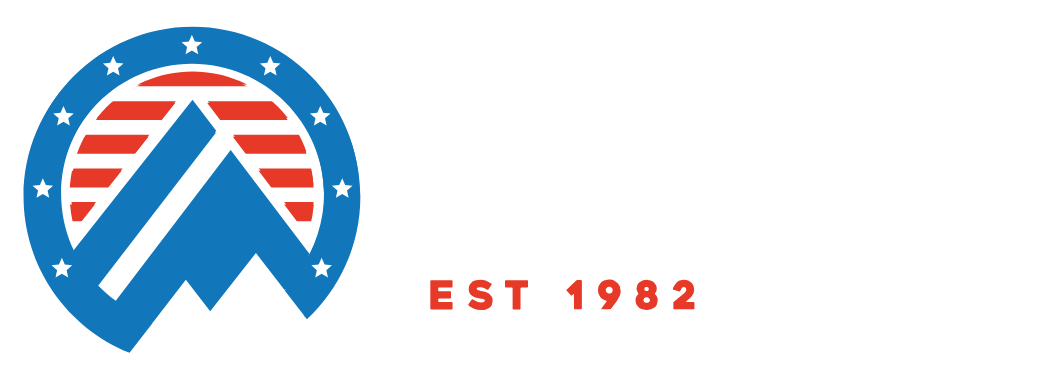
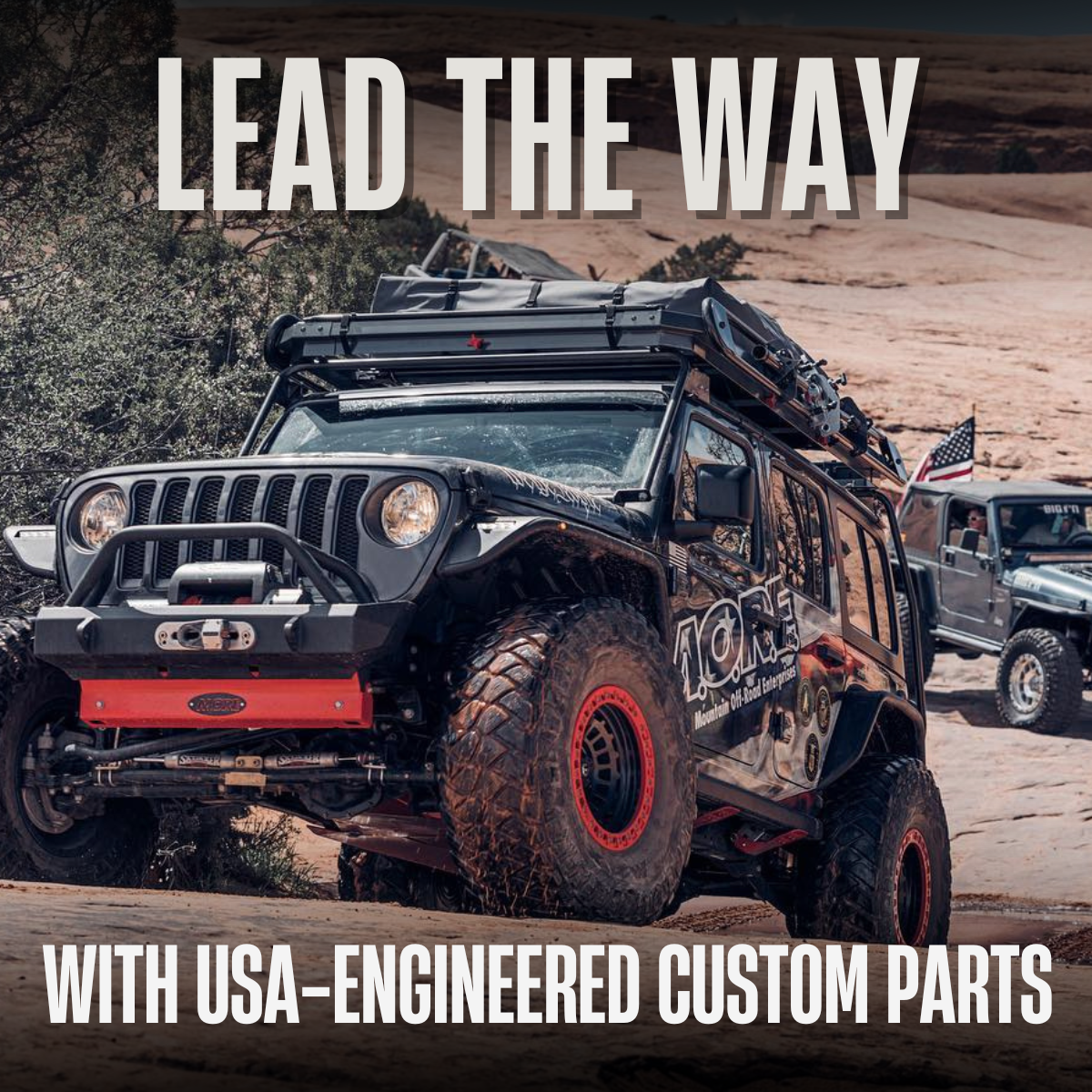
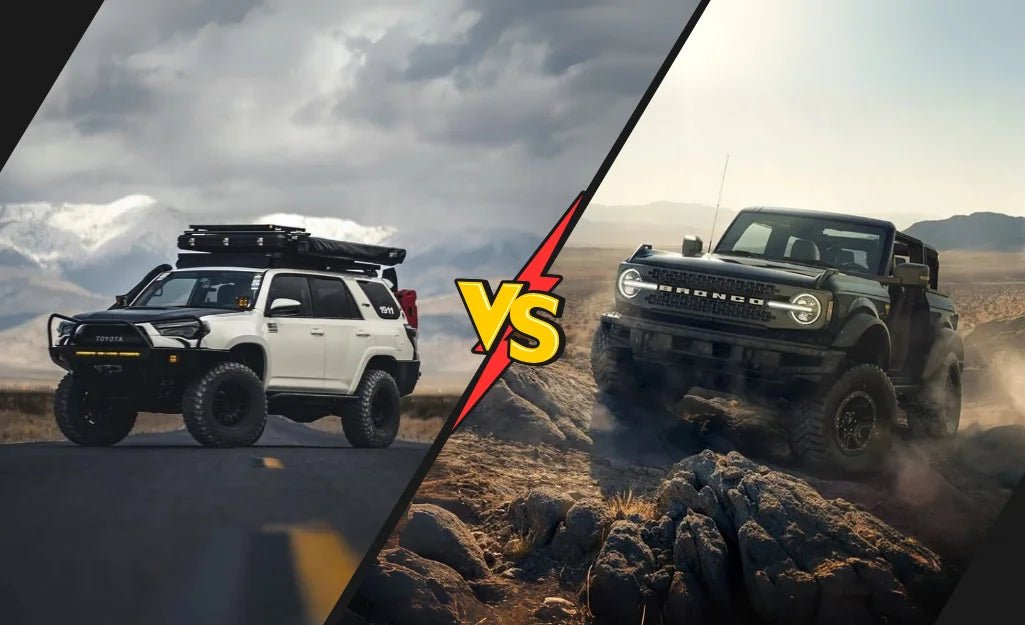
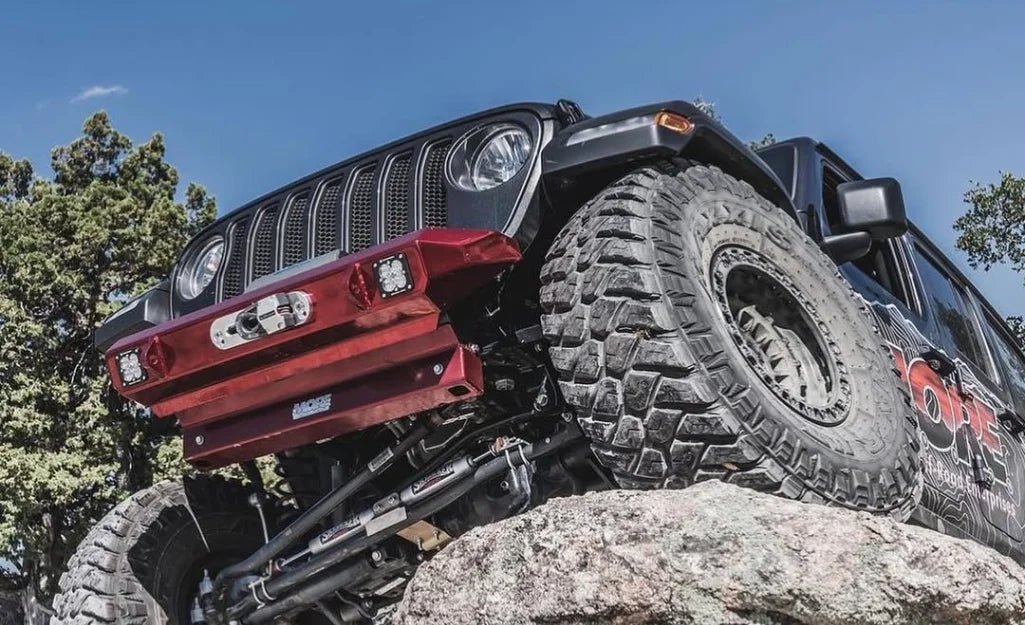
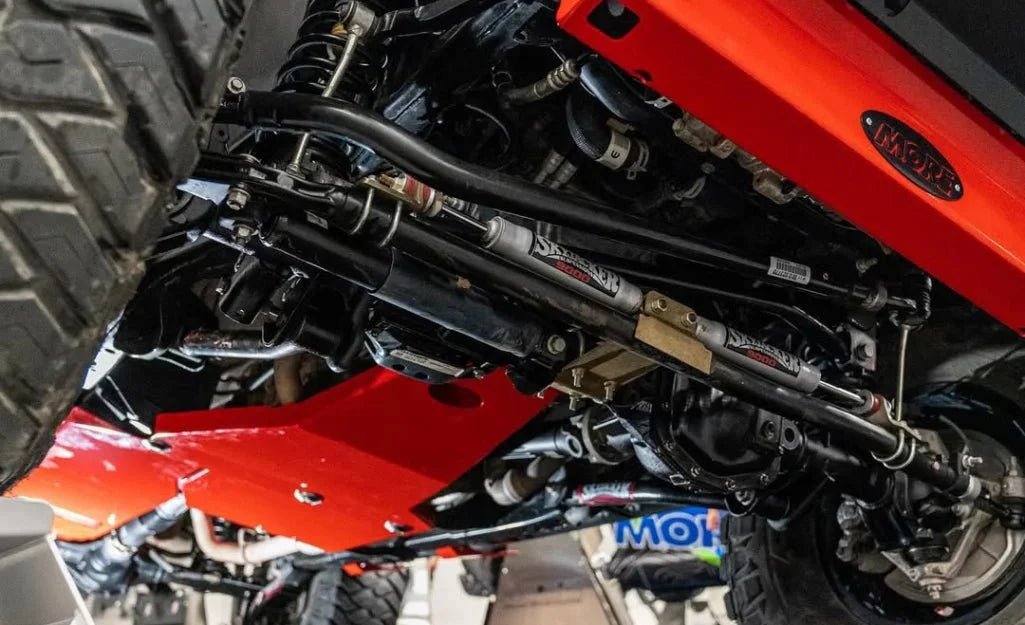
Leave a comment
This site is protected by hCaptcha and the hCaptcha Privacy Policy and Terms of Service apply.